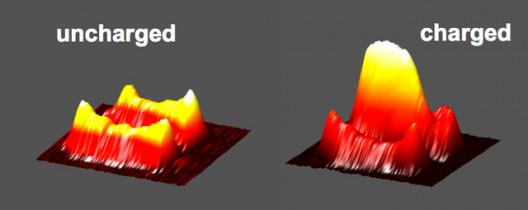Dendrites in the human body are tree-branch-like protuberances that help transmit synapses, defined as tiny transmitters and receivers for chemical messages between the cells. In this setting they are beneficial and necessary for brain and nervous system development.
In batteries, however, such protuberances send mixed and negative messages that short out connections between the components of the host battery. This is a serious enough issue that it’s kept lithium-metal batteries from serious development, dendrites growing between dissimilar metals being a malady of such cells, and even causing fires that make lithium batteries a bit fearsome. The blog has reported on efforts by Berkeley Lab researchers to reduce dendrite growth.
To enable visualization of these growths, Clare Grey, a professor of chemistry at Cambridge University, teamed up with NYU chemist Alexej Jerschow to develop a way of imaging batteries through magnetic resonance imaging (MRI). As Popular Mechanics explained in 2012, “These moss-like crystalline growths, called dendrites, are the bane of battery builders. They form at the barrier between the anode and cathode (- and + sign respectively on any battery). ‘The lithium dendrites will grow through the separator in the same way that ivy grows through concrete,’ Grey says. Dendrites tend to form in lithium batteries when the temperature increases dramatically or a charge is introduced too quickly; they can interrupt the charge and can cause batteries to short circuit. ‘If you charge too fast then you get these dendrites and degradation byproducts, and everything can go horribly wrong,’ Grey says.”
The Journal of the American Chemical Society reports on a recent attempt by researchers at Cornell University to suppress such dendrite growth and reduce the possibility of fires while improving battery performance.
Lynden Archer, Geoffrey Coates and colleagues were concerned with the flammable liquids contained in many electrolytes, “the substance that allows ions to flow between the electrodes of the battery.” Attempts to make a solid electrolyte without the volatility usually results in reduced ion transfer, especially at room temperature. Coates and his researchers have found a safer, solid polymer electrolyte (SPE) that does not promote dendrite growth. With Archer’s team looking at electrochemical characteristics of materials, the combined efforts led to a “new family of solid polymer electrolytes.”
“Not only are these materials safer than their liquid counterparts in LIBs, but they could also be used in high-energy lithium-metal batteries, such as promising lithium-sulfur and lithium-air batteries.”
Research was funded by the Energy Materials Center at Cornell, which receives support from the U.S. Department of Energy.
The abstract for the published paper gives a more detailed look at the chemistry involved.
“Solid polymer electrolyte (SPE) membranes are a critical component of high specific energy rechargeable Li-metal polymer (LMP) batteries. SPEs exhibit low volatility and thus increase the safety of Li-based batteries compared to current state-of-the-art Li-ion batteries that use flammable small-molecule electrolytes. However, most SPEs exhibit low ionic conductivity at room temperature, and often allow the growth of lithium dendrites that short-circuit the batteries. Both of these deficiencies are significant barriers to the commercialization of LMP batteries. Herein we report a cross-linked polyethylene/poly(ethylene oxide) SPE with both high ionic conductivity (>1.0 × 10–4 S/cm at 25 °C) and excellent resistance to dendrite growth. It has been proposed that SPEs with shear moduli of the same order of magnitude as lithium could be used to suppress dendrite growth, leading to increased lifetime and safety for LMP batteries. In contrast to the theoretical predictions, the low-modulus (G′ ≈ 1.0 × 105 Pa at 90 °C) cross-linked SPEs reported herein exhibit remarkable dendrite growth resistance. These results suggest that a high-modulus SPE is not a requirement for the control of dendrite proliferation.”


